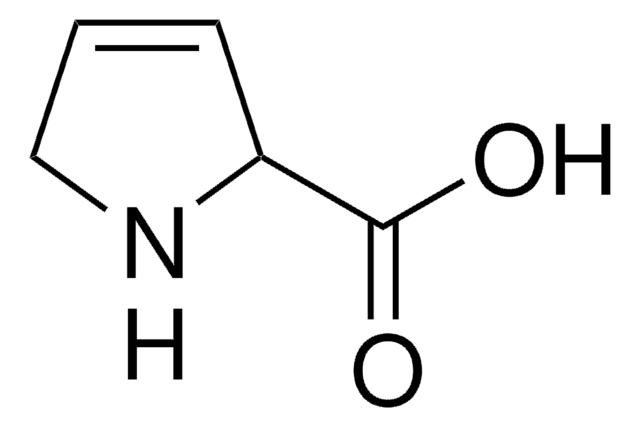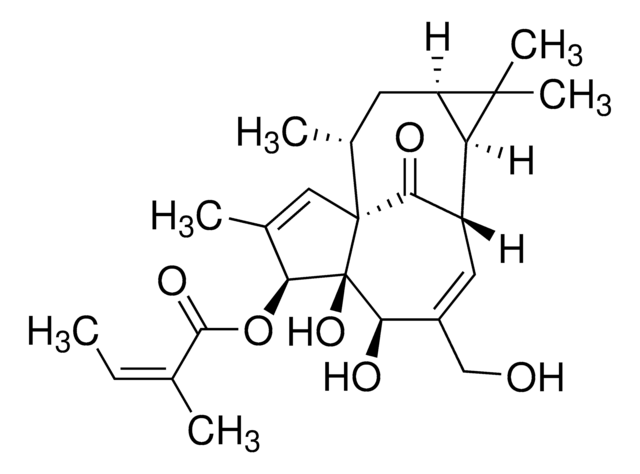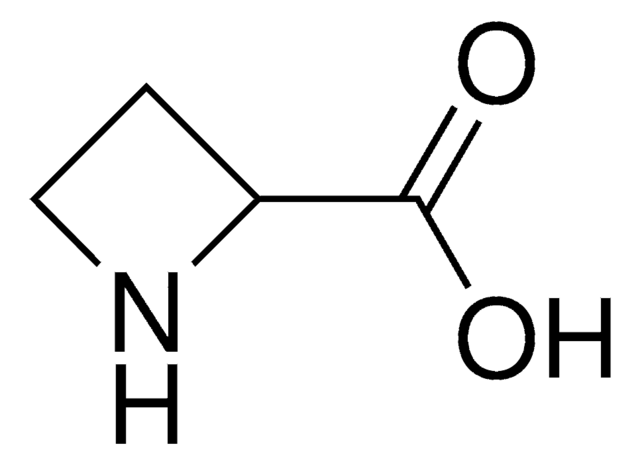Kluczowe dokumenty
D4893
3,4-Dehydro-L-proline
≥98% (TLC), suitable for ligand binding assays
Synonim(y):
(S)-3-Pyrroline-2-carboxylic acid, 3,4-Didehydro-L-proline
About This Item
Polecane produkty
Nazwa produktu
3,4-Dehydro-L-proline,
Próba
≥98% (TLC)
Poziom jakości
Formularz
powder
metody
ligand binding assay: suitable
kolor
white
mp
248-250 °C
Zastosowanie
peptide synthesis
ciąg SMILES
OC(=O)[C@H]1NCC=C1
InChI
1S/C5H7NO2/c7-5(8)4-2-1-3-6-4/h1-2,4,6H,3H2,(H,7,8)/t4-/m0/s1
Klucz InChI
OMGHIGVFLOPEHJ-BYPYZUCNSA-N
Szukasz podobnych produktów? Odwiedź Przewodnik dotyczący porównywania produktów
Opis ogólny
Działania biochem./fizjol.
Kod klasy składowania
11 - Combustible Solids
Klasa zagrożenia wodnego (WGK)
WGK 3
Temperatura zapłonu (°F)
Not applicable
Temperatura zapłonu (°C)
Not applicable
Środki ochrony indywidualnej
Eyeshields, Gloves, type N95 (US)
Wybierz jedną z najnowszych wersji:
Masz już ten produkt?
Dokumenty związane z niedawno zakupionymi produktami zostały zamieszczone w Bibliotece dokumentów.
Nasz zespół naukowców ma doświadczenie we wszystkich obszarach badań, w tym w naukach przyrodniczych, materiałoznawstwie, syntezie chemicznej, chromatografii, analityce i wielu innych dziedzinach.
Skontaktuj się z zespołem ds. pomocy technicznej







